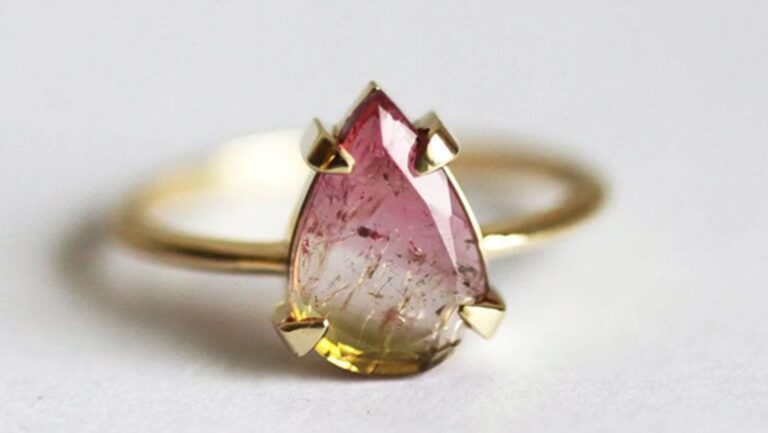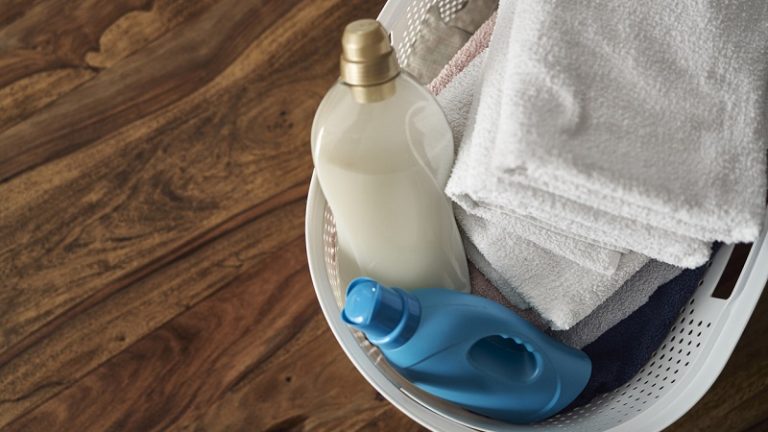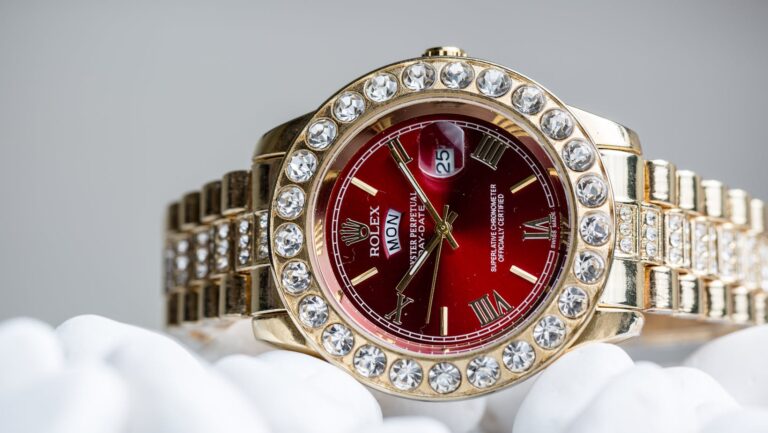What Does 925 Mean On Jewelry?
As a jewelry lover, you’ve probably noticed small numbers and letters engraved on rings, necklaces, and other pieces. These marks are known as hallmarks, and they indicate the metal content and purity of jewelry. One of the most common hallmarks is 925, stamped on silver jewelry. But what exactly does 925 mean?
I’ll explain the meaning of 925, why it matters, and how to interpret other hallmarks you might encounter. Consider this your handy guide to demystifying the marks on your jewelry!
What is a Hallmark?
Contents
- What is a Hallmark?
- What Does 925 Mean on Jewelry?
- Why is 925 Stamped on Silver Jewelry?
- Does All Silver Jewelry Have the 925 Stamp?
- Other Common Jewelry Hallmarks
- Does 925 Italy Mean Gold? Demystifying Stamps
- Does Sterling Silver Have Nickel? Composition of 925 Silver
- Does Sterling Silver Tarnish? Maintaining Your Jewelry
- Does 925 Silver Fade? Durability Concerns
- Does Sterling Silver Rust? Preventing Corrosion
- Do You Shower with 925 Silver? Tips for Proper Wear
- How to Clean Tarnished 925 Silver Jewelry
- Does Sterling Silver Turn Your Finger Green? Causes & Prevention
- What Does Silver Plated Mean vs. Sterling Silver?
- Does Sterling Silver Have Gold in it?
- Is 925 Sterling Silver Valuable? Worth of .925 Silver
- Does Sterling Silver Rust?
- How to Spot Fake Sterling Silver
- Differences Between Silver Colors – White, Yellow, Rose
- Summary
A hallmark refers to the stamp or engraving on a piece of precious metal indicating details about its quality, origin, and maker. Hallmarks serve as a guarantee of the metal’s purity and authenticity.
Historically, hallmarks were used to protect consumers by preventing counterfeit metals from entering the market. Different countries have distinct hallmarking systems with defined symbols, formulas, and meanings.
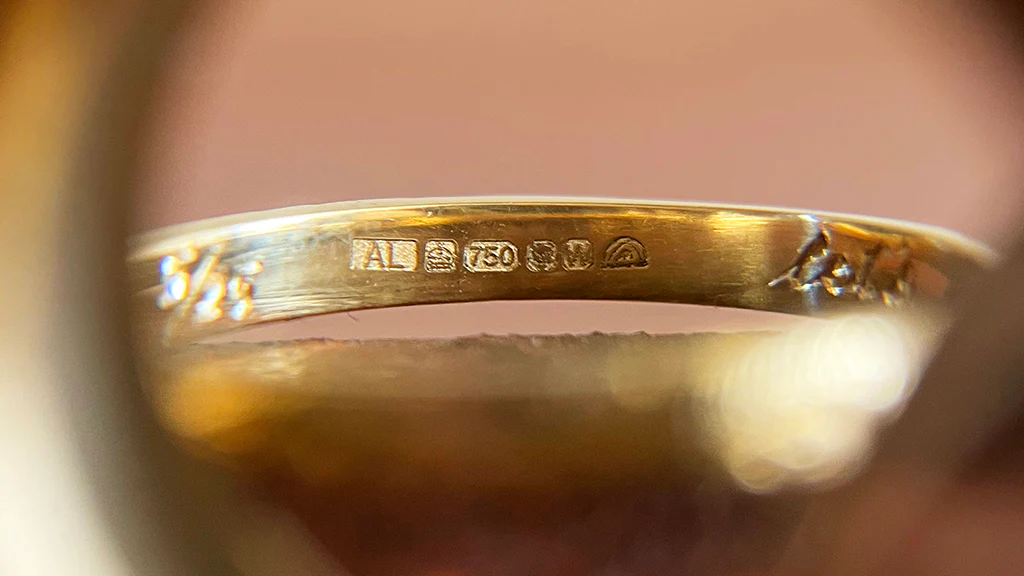
Common hallmarks stamped on jewelry include:
- Purity markings – Indicate the exact precious metal content, such as 925 for sterling silver.
- Maker’s mark – Symbol of the jewelry designer or brand.
- Assay office marks – Symbol of the testing center that verified the metal purity.
- Date marks – Numbers indicating the year of production.
- Country marks – Abbreviation for the country of origin.
So next time you look at a piece of fine jewelry, those tiny symbols carry important meaning!
What Does 925 Mean on Jewelry?
The numbers 925 are the most common hallmark you’ll find engraved on silver jewelry. But what do they signify?
925 indicates that the item is made from sterling silver.
More specifically, 925 silver consists of 92.5% pure silver and 7.5% other metals, usually copper.
This 92.5% silver content is the minimum required to be classified as sterling silver. The term “sterling” dates back to 13th century England, referring to a purity standard for silver coins.
Adding copper to pure silver creates a more durable alloy. Sterling silver is less prone to damage and wear than pure silver jewelry. The tradeoff is that sterling silver tarnishes over time.
So in summary:
- 925 signals that the jewelry meets the sterling silver standard of 92.5% pure silver content.
- The remaining 7.5% is usually copper for improved durability.
- Sterling silver is commonly used for jewelry and other decorative items.
- It provides an affordable alternative to pure silver or gold jewelry.
Why is 925 Stamped on Silver Jewelry?

There are a few key reasons why sterling silver jewelry typically carries the 925 hallmark:
- It indicates the item meets the 92.5% purity level to qualify as sterling silver.
- It guarantees buyers that the jewelry piece is authentically made of sterling silver, rather than a cheaper imitation metal.
- It distinguishes sterling silver from pure fine silver, which has a purity of 99.9%.
- It complies with legal hallmarking requirements for the sale of sterling silver jewelry. Many countries mandate the 925 stamp.
- It builds consumer trust and confidence in the quality of sterling silver jewelry.
So in short, the 925 mark protects both consumers and manufacturers by verifying the precious metal content. It’s a simple 3-digit code with an important meaning in the jewelry industry.
Does All Silver Jewelry Have the 925 Stamp?
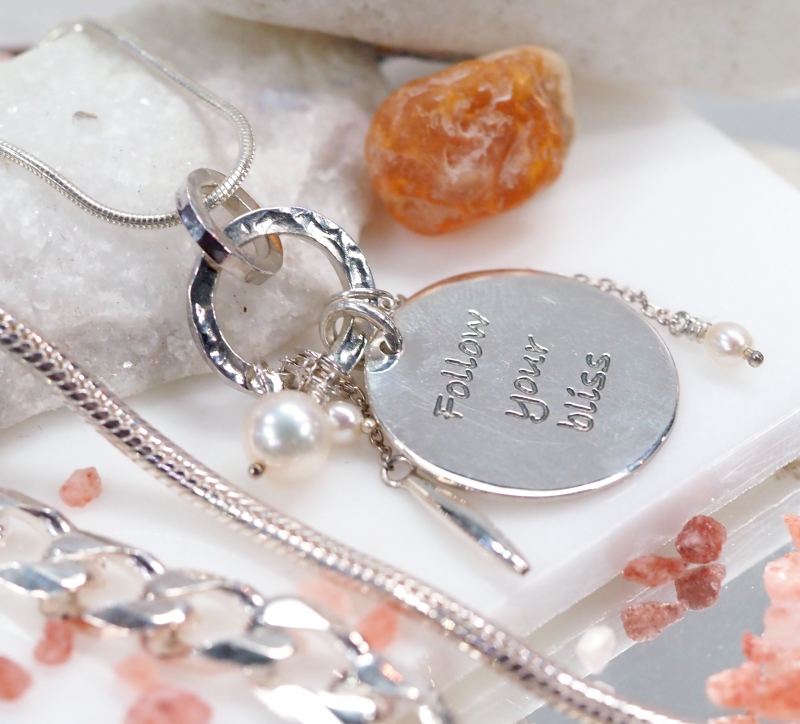
While most sterling silver jewelry will bear the 925 hallmark, there are a few exceptions:
- Vintage or antique pieces may have alternate silver purity markings since hallmarking practices have evolved over time.
- Non-sterling silver alloys, such as coin silver (90% pure) or nickel silver, will be stamped with their alternate metal compositions.
- Silver jewelry under a certain weight threshold in some countries is not required to be hallmarked.
- Handcrafted silver jewelry from small studios may not have official assayed hallmarks. However, reputable artisans will often stamp the metal purity.
- Foreign jewelry that doesn’t meet domestic hallmarking laws may lack a 925 stamp after import.
- Inherited or estate jewelry pieces frequently have worn hallmarks or lack markings entirely after years of wear.
- Counterfeit silver jewelry is sometimes unmarked or stamped with a fake 925. Genuine hallmarks are precisely engraved rather than messily stamped.
So while the 925 mark is extremely common, it’s not found on every piece of silver jewelry. It’s not mandatory worldwide. Vintage, handmade, imported and secondhand jewelry may lack a 925 even if authentically made of sterling silver.
Other Common Jewelry Hallmarks
While 925 predominantly appears on silver, other hallmarks are used for gold, platinum and jewelry with gemstones or pearls. Here are some common examples:
Gold Hallmarks
- 10K, 14K, 18K, 22K, 24K – Karat rating denoting gold purity from 41.7% pure up to 99.9% pure 24K gold.
- 417, 585, 750, 916, 999 – matching gold purity numbers used outside North America.
- Au – Gold’s elemental symbol on periodic table of elements.
- GP, GE – Stamp for “Gold Plated” and “Gold Electroplated”
Platinum Hallmarks
- 950 or PT950 – 95% pure platinum.
- 900PT or PLAT – 90% pure platinum.
- PT – Platinum elemental symbol.
Gemstone Hallmarks
- Diamond – Carats, cut grade, clarity ratings
- Ruby/Sapphire/Emerald – Country of origin, heat treatment
- Pearls – Natural or cultured pearls
- Gemological Institute of America (GIA) certification number
These markings provide proof of authenticity and details about jewelry craftsmanship. Understanding the hallmarks gives you insight into the purity, quality and origin of your fine jewelry.
Does 925 Italy Mean Gold? Demystifying Stamps
Some jewelry may carry peculiar hallmarks like “925 Italy” which seem to contradict the typical meaning of 925 silver. This has led to misconceptions about what certain jewelry stamps indicate.
Let’s clear up some common jewelry stamp myths:
925 Italy
925 Italy does not denote the gold purity or that the item contains any real gold. As we learned, 925 always refers specifically to sterling silver.
The “Italy” portion indicates the country of origin where the sterling silver jewelry was manufactured. Items made in Italy for export will carry the “925 Italy” stamp.
925 EP
925 EP means electroplated – the item has a silver rhodium plating layered over a sterling silver base. The EP signifies it is silver-plated, not solid 925 silver throughout.
925 CHINA
Likewise, 925 CHINA signals that the sterling silver piece was crafted in China rather than being 925 parts gold as some assume.
925 R
925 R denotes that the 925 silver is from recycled or reclaimed sources, rather than newly mined silver.
925 KR
This stamp indicates the jewelry is made of sterling silver with a karat gold plating or overlay. The 925 refers to the silver purity, while the KR shows it has a layer of gold.
Conclusion
“925” will only reference sterling silver, no matter what other symbols or words accompany it in the hallmark. By understanding common jewelry stamps, you can correctly interpret the markings and know what you’re buying.
Does Sterling Silver Have Nickel? Composition of 925 Silver
Given that sterling silver contains metals besides pure silver, you may wonder exactly what makes up the remaining 7.5% portion of 925 silver.
The most common alloying metal mixed with silver to create 925 sterling silver is copper. Adding copper improves the durability and makes the silver easier to work.
Sterling silver does not contain nickel, which can cause allergic reactions in sensitive individuals. Some lower-grade silver alloys add nickel to reduce costs, but never quality 925 sterling silver.
Here is the typical composition of sterling silver:
- 92.5% pure silver
- 7.5% copper – Increased hardness
- Trace amounts of zinc, iron, platinum or boron
Silver needs at least 92.5% purity to be sold as sterling. Good quality sterling contains around 92.7% – 93% silver. The trace metals account for the tiny remainder.
Nickel silver is a misleading name for a non-silver metal blend containing copper, zinc and nickel. Nickel gives it a silver look but it contains no real silver.
You won’t find nickel in real 925 sterling silver. The exemption is vintage white gold or platinum jewelry which sometimes contains nickel alloys. Modern white gold uses palladium instead.
Does Sterling Silver Tarnish? Maintaining Your Jewelry
Sterling silver stays bright and lustrous longer than lower purity silver alloys. But it still contains enough copper to react with oxygen in the air and gradually tarnish.
Tarnish forms a dark, discolored coating on the surface of sterling silver. This oxidation process causes the metal to turn yellow, brown, or blackish over time. Sulphur compounds accelerate tarnish, making silver jewelry prone to discoloration when exposed to common sources like:
- Air pollution
- Rubber bands
- Skin oils
- Hair products
- Perfume
Storing silver jewelry correctly helps minimize tarnish. The best way is in an airtight container, away from sunlight and dampness. Ziplock bags and anti-tarnish strips also help prevent oxidation during storage.
Regular polishing keeps sterling silver tarnish-free when wearing. Use a dedicated silver jewelry cleaning cloth or a mild liquid solution. Baking soda and aluminum foil also work for DIY silver cleaning at home.
Avoid submerging silver in water. Chlorine from pools, saltwater and mineral deposits contribute to corrosion. Take silver rings and bracelets off before washing hands, showering or cleaning.
While sterling silver requires some care, it’s much easier to maintain than lower purity silver that rapidly tarnishes. With proper storage and occasional polishing, 925 silver jewelry stays beautifully bright for generations.
Does 925 Silver Fade? Durability Concerns
Sterling silver is beloved for jewelry because it provides an affordable precious metal that’s built to last. Many 925 silver pieces become treasured heirlooms passed down for decades without showing signs of wear.
When well-cared for, a 925 silver chain, ring, or bracelet should not fade or turn your skin green. Here are signs of poor quality silver:
Fading – Solid 925 silver does not fade, bleach or change color. Plating or filler metals deteriorate.
Tarnishing – 925 resists tarnish, while lower purity silver oxidizes faster.
Denting/warping – Sterling silver is malleable but holds shape under normal wear. Low purity alloys bend permanently easier.
Skin reactions – Pure metals like sterling silver are hypoallergenic. Reactions indicate nickel or cadmium.
Chipping/peeling plating – Durability problems reveal cheap non-sterling metals underneath.
Remember, sterling silver must contain at least 92.5% pure silver by law. Jewelry stamped 925 should not deteriorate with standard use and care. Signs of low quality are a red flag you may not have a true 925 piece.
Concerns about fading or changing color likely indicate plated silver or costume jewelry. Seek items with hallmarks from reputable brands to ensure it’s solid sterling silver. With proper wear and maintenance, quality 925 silver jewelry remains timeless for generations.
Does Sterling Silver Rust? Preventing Corrosion

Sterling silver does not rust for two important reasons:
- Sterling contains 92.5% silver – Pure silver is naturally corrosion resistant and prevents rust.
- Sterling doesn’t contain iron – Rust requires iron to chemically react with oxygen.
Sterling silver resists rust and stains far better than other jewelry metals, including:
- Gold – 18K and 14K gold with alloyed metals can rust over time.
- Platinum – More durable than gold, but still contains trace metals susceptible to corrosion.
- Stainless steel – The chromium in steel provides rust protection, but it can still corrode.
- Jewelry containing iron – Steel jewelry components, bombé rings, watch cases etc. will rust.
Instead of rust, sterling silver’s main corrosion concern is tarnish. This is the dull, dark coating caused by silver reacting with sulfur or oxygen.
Prevent tarnish by:
- Storing in an airtight container.
- Using anti-tarnish strips in storage bags/boxes.
- Polishing regularly with a jewelry cloth or cleaning solution.
With proper maintenance, sterling silver will not rust or stain like other metals. It provides timeless beauty without corrosion concerns. The high purity silver content gives 925 jewelry its lasting shine and value.
Do You Shower with 925 Silver? Tips for Proper Wear
Can sterling silver jewelry safely be worn in the shower? The short answer is yes, but exercising some caution is wise.
Hot water, shampoos, and soaps speed up tarnish on silver. Chlorine residues from pools are also problematic. That said, an occasional shower won’t severely damage sterling silver.
To maintain 925 silver when showering:
- Rinse jewelry thoroughly with clean water after showering to remove chemical residues.
- Gently dry pieces with a soft towel before storage. Trapped moisture leads to tarnish.
- Store jewelry in resealable plastic bags or airtight cases.
- Limit jewelry wear in chlorinated pools. The chemicals react strongly with silver.
- Use mild, sulfate-free body wash without oils, perfumes, or dyes which cause buildup.
- Clean silver regularly using polishing cloths and non-abrasive silver cleaner.
- Consider removing silver jewelry before showering or swimming if it will be exposed frequently.
With prudent care, showering or washing hands with sterling silver on is perfectly safe. But prolonged exposure to hot water, chlorine, and chemicals will necessitate more frequent polishing and cleaning.
How to Clean Tarnished 925 Silver Jewelry
No matter how careful you are, tarnish inevitably occurs on sterling silver over time. Thankfully removing tarnish and restoring shine is simple.
Popular home methods for polishing tarnished 925 silver jewelry include:
- Silver polishing cloth – The easiest and safest way. Gentle, effective and reusable many times.
- Baking Soda & Aluminum Foil – Line a dish with foil, add baking soda + hot water to form a paste, then scrub jewelry. Rinse thoroughly after.
- Toothpaste – Use a soft-bristled toothbrush and basic toothpaste. Avoid gel types. Rinse completely afterwards.
- Vinegar or Lemon Juice – Soak for 2-3 minutes, scrub with soft cloth/toothbrush, rinse thoroughly. Avoid soaking porous gemstones.
- Silver Cleaner Solutions – Sold specifically for sterling silver. Follow product directions carefully.
Avoid bleach, ammonia, or harsh chemical cleaners which can damage silver. Store cleaned jewelry properly to prevent rapid re-tarnishing. With occasional polishing, 925 silver maintains its brilliant shine.
Does Sterling Silver Turn Your Finger Green? Causes & Prevention
Tarnished or low purity silver can sometimes cause green skin discoloration when worn on fingers. This reaction only occurs in certain conditions:
- Tarnish – As silver oxidizes, the sulfur compounds in tarnish can transfer to skin and cause greenish stains.
- Sweat – The salt, urea, and acids in perspiration interact with silver. Good hygiene and cleaning prevents buildup.
- Low purity silver – Base metal alloys with high copper or nickel content often lead to verdigris reactions.
- Prolonged wear – Frequent, extended silver ring use increases chance of finger greening without proper cleaning.
Sterling silver that’s kept clean and polished should not turn skin green or leave stains. The oxidation happens when contaminants and tarnish particles transfer to the skin surface.
Allergic reactions to nickel plating causes similar skin issues, but nickel is never present in genuine 925 sterling silver.
To avoid any potential problems, store silver properly between uses and regularly wash hands and jewelry. Clean any tarnish buildup promptly with a silver polish cloth or solution.
With periodic cleaning and careful wear, 925 sterling silver jewelry poses no risks of green skin stains when cared for properly.
Here’s more content continuing the article:
What Does Silver Plated Mean vs. Sterling Silver?
Silver plated and sterling silver are very different:
- Sterling silver contains 92.5% pure silver mixed with copper for durability. Solid precious metal.
- Silver plated is a base metal like brass or nickel that is coated with a thin layer of silver via electroplating.
Silver plating has several key characteristics:
- Much lower silver content – usually less than 2% silver.
- Silver layer is thin – typically .5 to 2 microns thickness.
- Silver coating applied by electroplating over base metal.
- Prone to wearing off over time, exposing base metal underneath.
- Much lower value and not as durable as solid silver.
- Usually stamped “silver plate” “silver plated” or the initials S.P.
- Can provoke allergic reactions due to nickel in the base metal.
Sterling silver offers many advantages:
- Substantial 92.5% silver purity guaranteed.
- Solid precious metal with long-lasting shine that won’t wear away.
- Hypoallergenic and safe for sensitive skin.
- Higher value and better investment over cheap plated silver.
- Often contains maker’s marks and quality hallmarks like 925 stamp.
- With care, can become a family heirloom passed down for generations.
In short, sterling silver contains far more real silver content and has better luster, value, and durability than silver plating. Always inspect jewelry closely and check for stamps to determine which type of silver you’re purchasing.
Does Sterling Silver Have Gold in it?
Sterling silver contains no gold. It is an alloy composed of 92.5% pure silver and 7.5% copper or other metals.
This differs from vermeil, which is sterling silver plated with gold. The gold is applied via electroplating, not mixed directly into the sterling silver alloy itself.
Two common gold-related silver stamps:
925 EP – This means “925 silver electroplated.” The item has a thin gold coating over sterling silver.
925 KR – Denotes sterling silver with karat gold overlay, for example 18K gold overlay. Again, the metals are layered, not blended together.
There are a few other silver and gold combinations found in jewelry:
- Gold vermeil – Solid gold over sterling silver. Must have 2.5 microns of gold.
- Rolled gold – Thin gold sheet metal bonded to another metal.
- Silver gilt – Thin layer of gold over pure silver.
- Gold fill – Base metal layered with 10K+ gold. At least 5% gold by mass.
But sterling silver alone does not have any gold content mixed directly into the alloy. Look for stamping or description labels to understand how gold is incorporated on a silver jewelry piece.
Is 925 Sterling Silver Valuable? Worth of .925 Silver
Silver prices fluctuate daily based on metals trading markets, but sterling silver maintains significant intrinsic value:
Silver Spot Price – The wholesale price for an ounce of pure silver, around $25 at time of writing. Provides a baseline.
Sterling Value – With 92.5% purity, sterling contains about 0.85oz of pure silver per ounce. So the base value equals 85% the spot price.
Craftsmanship Value – Handmade and intricate silver pieces have higher worth reflecting skilled labor and design.
Brand Value – Jewelry from top designers carries a premium.
Sentimental Value – Heirlooms passed down add personal significance regardless of metal value.
925 silver jewelry tends to be valuable because:
- High purity commands a premium price over cheaper alloys.
- Classic styles remain fashionable decade after decade. Sterling pieces become family heirlooms.
- Stamped 925 proves the silver content, reassuring buyers.
- Far rarer and pricier than base metals. More coveted than silver plate or steel.
Sterling silver stands the test of time both in beauty and in retaining financial value. 925 jewelry makes a sound investment compared to fast fashion accessories. With care and periodic repolishing, sterling silver lasts for generations.
Does Sterling Silver Rust?
Sterling silver does not rust for two main reasons:
1. High silver purity
Pure silver is inherently corrosion resistant. With 92.5% silver content, sterling resists rust and tarnishing far better than other jewelry metals.
2. Lack of iron
Sterling silver contains no iron. Rust requires iron to chemically react with moisture and oxygen. Without iron, silver cannot oxidize into rust.
Sterling can still tarnish from exposure to sulfur compounds in the air. This causes a dark coating to develop on the surface. But this is not the same red, flaky iron oxide rust that forms on base metals.
Tarnish is avoided by proper storage and regularly cleaning silver:
- Use anti-tarnish strips in closed storage bags or boxes.
- Polish frequently with a dedicated silver cloth.
- Wash silver jewelry after exposure to perfume, lotion, chlorine etc.
- Prevent scratching during stacking and storage.
Thanks to its high purity and lack of iron content, sterling silver stays corrosion-free and maintains a brilliant shine when cared for properly.
How to Spot Fake Sterling Silver
With rising silver prices, counterfeit sterling silver jewelry has become common. Here are tips for identifying fake 925 silver:
- Hallmark – Genuine 925 silver hallmarks are crisp and clear. Fakes tend to be faint, crooked or uneven.
- Magnet Test – Sterling silver is non-magnetic. Strong attraction to a magnet indicates iron alloys.
- Durability – Real silver is malleable but durable. Fakes dent and bend easily.
- Tarnish Test – Sterling develops a patina over time. Fakes stay shiny or have painted “tarnish.”
- Acid Test – A drop of nitric acid on a hidden spot should dissolve silver but not base metals.
- Ping Test – Silver makes a ringing “ping” sound when flicked. Fakes sound dull.
- Price – Extremely low prices likely mean plated knockoffs.
When uncertain, have jewelry appraised by a professional gemologist. They can perform advanced analysis to authenticate silver purity and hallmark legitimacy. But applying these basic checks helps identify obvious fake sterling silver.
Differences Between Silver Colors – White, Yellow, Rose
Silver jewelry comes in various colors depending on the metals it is alloyed with:
Sterling silver has a bright white color, from 92.5% pure silver combined with metals like copper. Nickel can add a grayish tone.
Oxidized silver is sterling silver that has been darkened using liver of sulfur or other treatments. This antique gray/black finish highlights textures.
Yellow silver contains silver alloyed with gold to produce a warm, golden tone while maintaining shine. More expensive than sterling.
Rose silver mixes copper with silver, with the pink copper hue altering the metal color. May also contain zinc or nickel.
Green silver uses zinc or cadmium to create a pale green tint.
Blue silver adds iron for a bluish cast. Oxidation also turns some silver blue over time.
Purple silver mixes aluminum with silver to shift the color towards pale violet-gray shades.
The color of silver can drastically change beauty, value and properties. Always check for hallmarks to verify the exact metal composition.
Summary
I hope this helps explain the meaning of 925 silver hallmarks and gives you confidence in evaluating jewelry markings!
The key takeaways:
- 925 denotes sterling silver: 92.5% pure silver + alloy metal
- The stamp guarantees precious metal purity and authenticity
- Sterling silver is an affordable and durable jewelry metal
- Maintain shine by preventing tarnish and wearing properly
- Real silver vs. plated silver have very different properties
- Various silver alloys create diverse jewelry colors
Knowing how to interpret stamps like 925 provides insight into the origins, components, and quality of your silver jewelry. This helps ensure you make informed purchases.
Whether shopping for a new statement ring or necklace, or researching the background of heirloom pieces, hallmarks provide clues into the heritage of your sterling silver jewelry.

Founded by Sophia Rodriguez, IGXO Cosmetics is a PETA-certified, cruelty-free, and vegan makeup brand.
